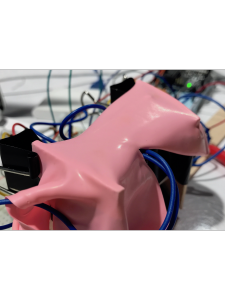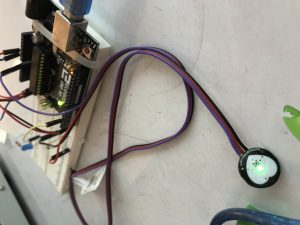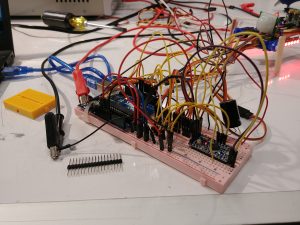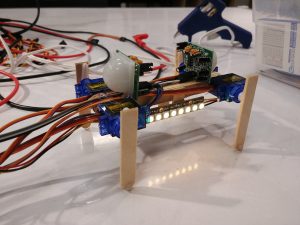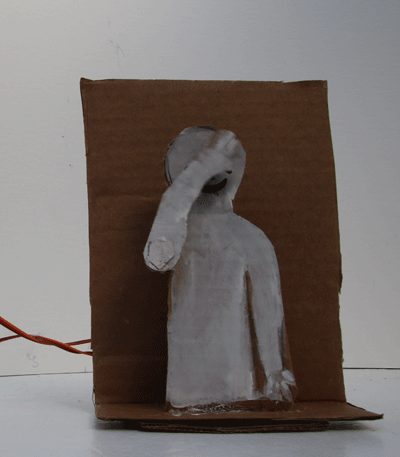This device personifies, well buggifies, anger of a disturbed bee. The yellow board serves as the basis of the little creature. And all the components are stuck to the board, just like the parts of a bee are stuck to its fuzzy body. A red LED illuminates to show the stinger of the bee, and a piezo buzzer audibly conveys the bee’s angry wingflaps.
A viewer can interact with the piece and make the bee angry! On the converse, to show the bee is angry, the circuit also needs to show the bee is not angry. So, a viewer can tap two capacitive sensors, one to make the bee angry, and one to make it less angry. Ideally, it would be a fun interaction if one sensor could be used for both interactions. A jab interaction would make the be angry, but a petting motion would calm it down.
To make this program happen, I combined two example sketches, and modified the code some. I started with the TouchSense 1188 example. The program registers which pin is touched, when the pin is touched. I changed the program to increment a counter when the angry pad is touched, and subtract the counter when the happy pad is touched. The second example program was to control the position of a servo with a potentiometer. The main problem I encountered during this was trying to integrate the two programs together. Additionally, two of the capacitive sensors were not registering, but that is probably because of the nature of the sensor pads.
Video: https://www.youtube.com/watch?v=2sn3x6xGiFQ&feature=youtu.be
Zip: https://drive.google.com/file/d/0B6FN8R0MrzCKS29BbHk3ZW84MEE/view?usp=sharing
